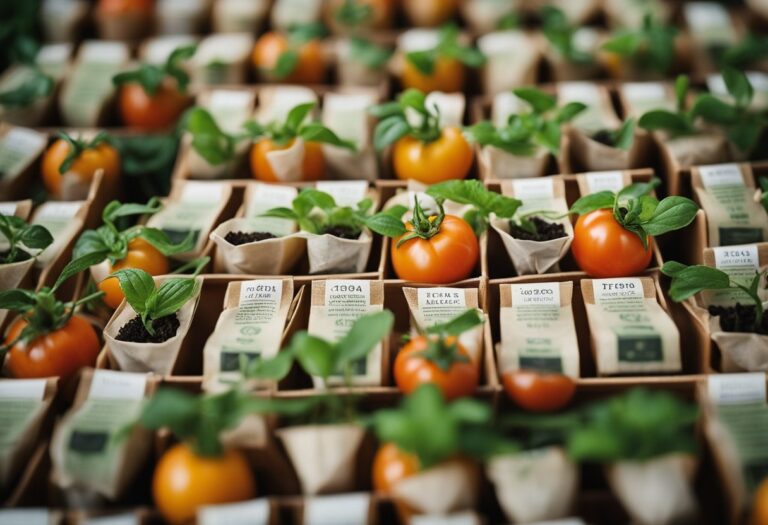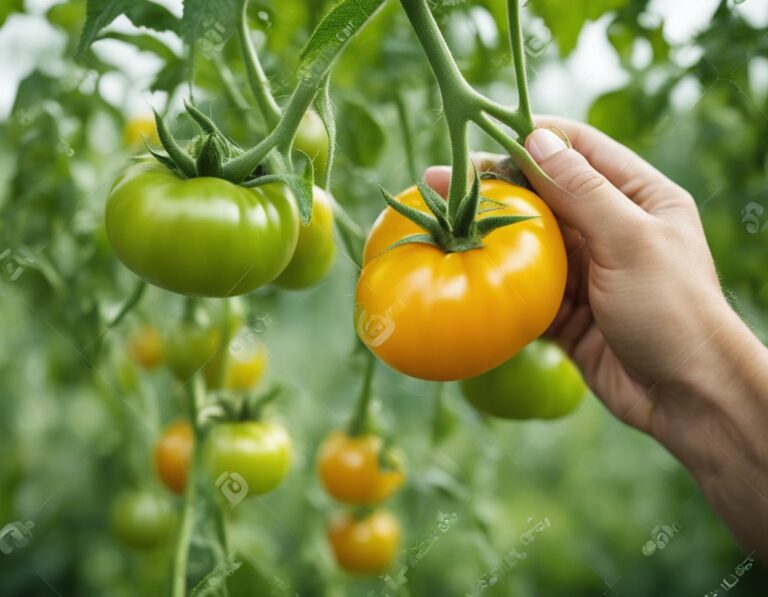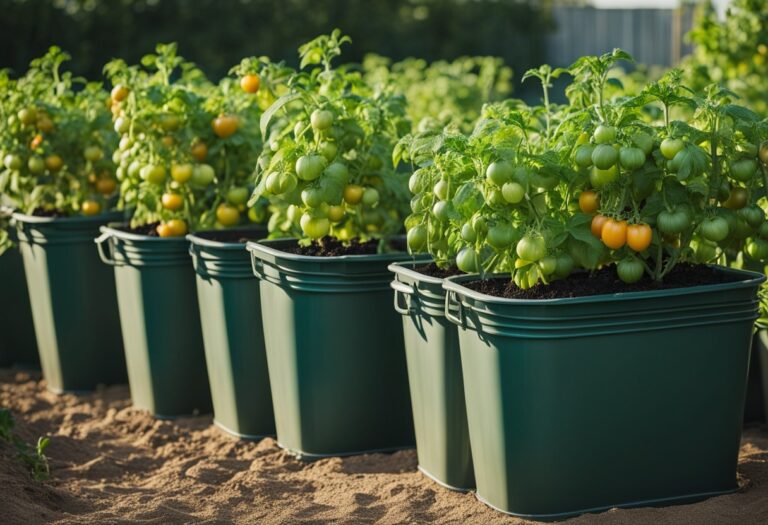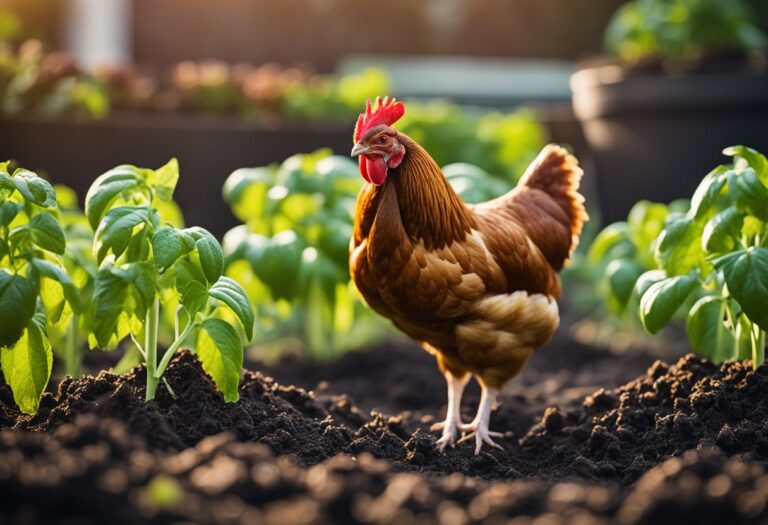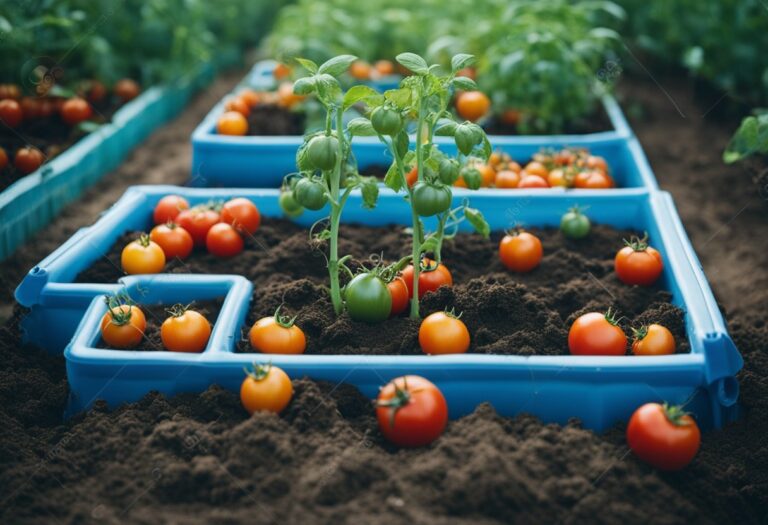Is 40 Degrees Too Cold for Tomatoes? Here’s What You Need to Know
If you’re a gardener, you know that tomatoes are a popular and easy-to-grow vegetable. However, you may be wondering if 40 degrees is too cold for your tomato plants.
While tomato plants can tolerate cooler temperatures, they are sensitive to cold and can suffer damage if exposed to prolonged periods of cold weather.
Understanding Tomato Plant’s Temperature Tolerance is key to ensuring a successful harvest. Tomato plants thrive best when the weather is consistently warm.
If the temperature drops below 40 degrees Fahrenheit, tomato plants will experience stunted growth, wilted leaves, and fruit pits. Additionally, pollen production will be reduced if the temperature is lower than 50 degrees Fahrenheit. While 40 degrees at night is not ideal for tomatoes, it is not necessarily too cold for the plants.
Key Takeaways
- Tomato plants can tolerate cooler temperatures, but are sensitive to cold and can suffer damage if exposed to prolonged periods of cold weather.
- Tomato plants thrive best when the weather is consistently warm. If the temperature drops below 40 degrees Fahrenheit, tomato plants will experience stunted growth, wilted leaves, and fruit pits.
- Pollen production will be reduced if the temperature is lower than 50 degrees Fahrenheit.
Is 40 Degrees Too Cold for Tomatoes?
Tomatoes are a warm-season crop that thrives in hot temperatures. They require temperatures between 70°F to 85°F at night and 59°F to 68°F at daybreak for optimum growth and fruit development. However, what happens when the temperature drops below 40°F? Is it too cold for tomatoes?
Tomato plants are not okay at 40 degrees Fahrenheit. They are highly sensitive to cold temperatures and can suffer cold damage even when the temperature drops below 60°F. Tomato seeds won’t germinate when the soil temperature is below 50°F, and seedlings can suffer cold damage in temperatures below 60°F.
When the temperature drops below 40°F, tomato plants can become damaged. It can affect the plant’s growth, fruit development, and even cause the plant to die. However, mature tomato plants can survive short periods of cold temperatures if they are protected.
If you live in an area where the temperature drops below 40°F, it’s important to take measures to protect your tomato plants. Here are some tips to help you protect your tomato plants from cold temperatures:
- Cover your tomato plants with a frost blanket or cloth cover to protect them from the cold.
- Use a cardboard box to cover your tomato plants. Place the box over the plant and secure it with stakes or rocks.
- Use a cloche or greenhouse to protect your tomato plants from the cold.
- Water your tomato plants before the temperature drops. Wet soil retains heat better than dry soil, which can help protect your plants.
Understanding Tomato Plant’s Temperature Tolerance
Tomatoes are a warm-season crop that thrives in warm and sunny weather. The ideal temperature range for tomato plants is between 60°F to 85°F during the day and 55°F to 60°F at night.
However, the tomato plant’s temperature tolerance is a fairly narrow range, with the minimum temperature for active growth being 55°F.
Effects of Cold Temperatures on Tomato Plants
Tomato plants are sensitive to cold temperatures and can experience stunted growth, wilted leaves, and fruit pits if exposed to temperatures below 40 degrees Fahrenheit.
Pollen production will be reduced if the temperature is lower than 50°F. Furthermore, tomato seeds won’t germinate when the soil temperature is below 50°F, and tomato seedlings suffer cold damage in temperatures below 60°F.
Effects of Hot Temperatures on Tomato Plants
Tomatoes will thrive when grown within a 30-degree range of 55 – 85°F. However, if tomatoes are exposed to too cool or too hot temperatures, especially over extended periods, this can adversely affect the health of your plants and harvest production.
Extreme heat can cause sunscald, which is when the fruit’s skin becomes blistered, cracked, or discolored due to exposure to the sun’s direct heat.
Protecting Tomato Plants from Cold Temperatures
To protect your tomato plants from cold temperatures, you can cover them with blankets, tarps, or other protective coverings. You can also use a frost cloth or row cover to protect your plants from frost.
These materials will help to trap heat and keep the temperature around your plants warmer. Additionally, you can water your plants during the day to help them retain heat, and you can add mulch to the soil to help insulate the roots from the cold.
How Cold Can Tomatoes Tolerate?
Tomatoes are cold-sensitive plants, and even cool temperatures can affect them. It doesn’t take a frost to damage or kill them. Tomato seeds won’t germinate when the soil temperature is below 50 degrees F, and tomato seedlings suffer cold damage in temperatures below 60 degrees F.
While 40 degrees at night is not ideal for tomatoes, it is not necessarily too cold for the plants. However, tomato plants may experience stunted growth or reduced fruit production if they are exposed to prolonged periods of cold weather.
The ideal growing temperature for most tomato varieties is between 55 and 85 degrees Fahrenheit. Because tomatoes prefer such warm temperatures, gardeners typically start their tomato plants from seed do so indoors near a well-lit window or with grow lights.
If you are growing tomatoes outside, it is essential to monitor the weather and take steps to protect your plants from cold temperatures.
Here are some tips to help you protect your tomato plants:
- Cover your tomato plants with blankets, tarps, or row covers to protect them from frost and cold temperatures. Be sure to remove the covers during the day to allow the plants to get sunlight and air.
- Mulch around the base of your tomato plants to help insulate the soil and keep it warm.
- Water your tomato plants regularly, but avoid watering them in the evening when temperatures drop. Wet foliage can increase the risk of frost damage.
- Plant your tomato plants in a sheltered location, such as near a south-facing wall or in a greenhouse, to protect them from cold winds.
Effects of Cold on Tomato Plants
When it comes to growing tomato plants, the temperature plays a crucial role in their growth and productivity. Tomatoes are a warm-season crop, and they thrive in temperatures between 60 and 70 degrees Fahrenheit.
However, they can tolerate some cooler temperatures, but they won’t produce as much fruit. If the temperature gets too cold, the plants will stop growing altogether. So, is 40 degrees too cold for tomatoes? Let’s find out.
Physical Changes
When tomato plants are exposed to temperatures below 50°F (10°C), they can develop chilling injury. The leaves and stems of the plant may turn black, and the plant may drop its flowers and stop growing.
If the temperature dips below 40°F (4.5°C), the tomato plant may be damaged beyond repair. Temperatures below 40 degrees Fahrenheit will damage the plant, causing the leaves to turn brown, and the fruit to stop developing. If the temperature dips below freezing, the plant will die.
Growth and Productivity
The longer your tomatoes are exposed to low temperatures, the worse they’ll damage. Below 32°F, brief exposure will severely damage your plants and their fruits, causing them to die.
Extended exposure to 33°F – 40°F can cause wilting leaves and stunted growth. Exposure to 41°F – 50°F can cause reduced growth and yield, and the fruit may not ripen as expected.
It’s essential to note that tomato varieties differ in their ability to tolerate cold weather. Some varieties are bred to be more cold-tolerant and can set fruit in cooler temperatures below 55 degrees F.
These varieties typically also mature earlier. Early-season varieties mature in 52 to 70 days, and mid-season tomatoes in around 70 to 80 days.
Protecting Your Tomato Plants from Cold
Tomatoes are cold-sensitive plants and can be damaged or killed by cold weather, even if it doesn’t reach frost temperatures. Tomato seeds won’t germinate when the soil temperature is below 50 degrees F, and tomato seedlings suffer cold damage in temperatures below 60 degrees F.
If the temperature drops below 40 degrees F, it can cause significant damage to mature plants, including leaf drop and even death.
To protect your tomato plants from the cold, you can use several methods, including:
Using Greenhouses
Greenhouses are an excellent way to protect your tomato plants from cold weather. A greenhouse provides a warm and stable environment for your plants and can help to extend your growing season.
You can choose from a variety of greenhouse designs, including freestanding and attached models, and you can also opt for a DIY greenhouse if you’re handy with tools.
Applying Mulch
Mulching your tomato plants can help to protect them from cold temperatures. Mulch acts as an insulator, trapping heat in the soil and preventing it from escaping.
You can use a variety of materials for mulch, including straw, leaves, and grass clippings. Apply a layer of mulch around the base of your tomato plants, making sure to cover the soil completely.
Plant Covers
Plant covers are another effective way to protect your tomato plants from the cold. You can use a variety of materials for plant covers, including blankets, tarps, and row covers.
Cover your tomato plants with the material of your choice, making sure to secure it tightly to prevent it from blowing away in the wind.
When using plant covers, make sure to remove them during the day to allow your tomato plants to get enough sunlight. Also, be sure to water your plants regularly, as covered plants can dry out quickly.
When to Plant Tomatoes for Optimal Growth
Tomatoes are warm-season vegetables that thrive in warm temperatures. The ideal temperature range for most tomato varieties is between 55 and 85 degrees Fahrenheit. Planting tomatoes when the temperature is too cold can lead to stunted growth, wilted leaves, and fruit pits.
The best time to plant tomatoes is in the spring when the soil temperature has warmed up to at least 60 degrees Fahrenheit. In most regions, this means planting between late April and early June. However, if you live in a region with a short growing season, you may need to start your tomato plants indoors in late winter and transplant them outdoors once the soil has warmed up.
If you plant your tomatoes too early in the season, they may be exposed to cold temperatures and frost, which can damage the plants and reduce fruit production. To avoid this, you can use protective measures such as row covers, cloths, or plastic tunnels to keep the plants warm during cold snaps.
It’s also important to consider the specific tomato variety you’re planting. Some varieties are more cold-tolerant than others and can withstand lower temperatures. For example, cherry tomatoes and Early Girl tomatoes are known for their ability to tolerate cooler temperatures. However, most tomato varieties need warm soil and air temperatures to grow and produce fruit.
Frequently Asked Questions
Should I bring my tomato plants inside at night?
It depends on the temperature outside. If the temperature is expected to drop below 40 degrees Fahrenheit (4.4 degrees Celsius), it is best to bring your tomato plants inside to protect them from the cold.
However, if the temperature is above 40 degrees Fahrenheit, your tomato plants should be fine outside.
What temperature is too low for tomato plants?
Tomato plants are sensitive to cold temperatures and can be damaged by frost. The ideal temperature range for growing tomato plants is between 60 and 70 degrees Fahrenheit (15.5 to 21 degrees Celsius).
If the temperature drops below 50 degrees Fahrenheit (10 degrees Celsius), tomato plants can develop chilling injury. If the temperature dips below 40 degrees Fahrenheit (4.4 degrees Celsius), the tomato plant may be damaged beyond repair.
What temperature is too hot for tomato plants?
Tomato plants thrive in warm temperatures, but when the temperature rises above 90 degrees Fahrenheit (32 degrees Celsius), they can experience heat stress.
When tomato plants experience heat stress, they may drop their flowers and fruit. To prevent heat stress, it is important to keep tomato plants well-watered and provide them with shade during the hottest parts of the day.
How to cover tomato plants?
Covering tomato plants can help protect them from cold temperatures and frost. You can cover tomato plants with blankets, tarps, or other materials.
Be sure to secure the coverings so they do not blow away in the wind. It is important to remove the coverings during the day to allow sunlight and air to reach the plants.
What to do with tomato plants when it gets cold?
When it gets cold outside, it is important to protect your tomato plants from the cold. You can bring your tomato plants inside if the temperature is expected to drop below 40 degrees Fahrenheit (4.4 degrees Celsius).
You can also cover your tomato plants with blankets, tarps, or other materials to help protect them from the cold. Be sure to remove the coverings during the day to allow sunlight and air to reach the plants.
How do you keep tomato plants warm at night?
To keep tomato plants warm at night, you can cover them with blankets, tarps, or other materials. You can also use a space heater or heat lamp to provide additional warmth.
Be sure to monitor the temperature and avoid overheating the plants. It is important to remove the coverings during the day to allow sunlight and air to reach the plants.

